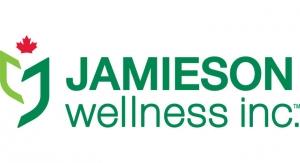Natalie Cajic11.01.08
In May 2008, the functional foods and natural health products (FFNHP) sector in Canada took a giant leap forward with the publication of its first sector strategy.
Nutri-Net Canada (NNC) published "Working Together for a Healthy Canada-A Strategy for the Canadian Functional Food and Natural Health Products Sector" and effectively set course to a sector that has seen significant growth in recent years, both in terms of the size of the domestic market and export sales.
Established in December 2005, NNC represents an alliance of national and regional organizations working together to promote the advancement of Canada's FFNHP sector. Its key function is as catalyst and facilitator of the strategic collaboration between industry and sectoral stakeholders.
Now with a sector strategy in place, NNC will also seek to be an enabler of the FFNHP sector development initiatives by taking a significant role in bridging support from current and future collaborating organizations.
Canada's FFNHP sector makes up 2.6% or $3.2 billion of the more than $100 billion global market for functional foods and dietary supplements. This figure is projected to double by 2010, according to the Haisley Millar Consulting Group, authors of the NNC strategy. Key factors propelling this growth include Canada's changing demographic, a likely modernization of the regulatory environment and its diverse agricultural base.
Today's consumers are making the connection between health and nutrition, according to the Ottawa-based National Institute of Nutrition's 2001 "Tracking Nutrition Trends" survey where the majority of Canadians surveyed cite "health maintenance" as a key consideration when selecting foods.
In addition, Canada's aging population has also spurred the FFNHP sector. At the start of a new century, one in eight Canadians was aged 65 years or over. By 2026, one in five will have reached age 65. These "Baby Boomers" are very motivated by healthy living and are more willing to look for self-care approaches to their health.
Interest in a healthy lifestyle and its connection to diet and nutrition has driven Canadians to purchase nutritional products that support this lifestyle shift. Market data reveals that in 2001, consumers spent approximately CAN$175 per person on nutritional products, a 130% increase over 1997. And a report in 2004 by MarketResearch.com indicates the trend continues to build with estimates showing Canadians spending more than CAN$2.7 billion on functional foods per year or CAN$212.32 per capita.
The strengthening of Canada's domestic FFNHP sector is in keeping up with global market trends that projects global demand for FFNHP ingredients to increase by nearly 6% annually to $15.5 billion in 2010, serving a $197 billion global nutritional product industry, according to a report by The Freedonia Group, Inc.
As a result, Canada is emerging to be an important supplier of bioactive ingredients in the growing FFNHP world market. Companies such as Ocean Nutrition Canada Ltd. and Harmonium International Inc. are just two examples of successful sellers of marine-sourced omega 3 fatty acids and probiotics, respectively, in the global marketplace.
Canadian suppliers are also well known in the areas of soluble and insoluble fiber from oats, barley and pulses; omega 3 fatty acids from flax; unsaturated fatty acids from canola oil; plant sterols and stanols from vegetables; and protein from soy.
However promising the outlook is for this developing industry, the FFNHP sector in Canada faces challenges on several fronts as it matures into a significant contributor to the domestic economy and internationally.
While the health benefits of FFNHPs are globally recognized, they remain under-recognized within Canada's public policy and regulatory environments.
All foods, natural health products (NHPs) and drugs are strictly regulated in Canada under federal law and regulations, which at times differ substantially from the U.S. and other industrialized countries.
The category of functional foods is not defined or recognized in law in Canada, so therefore there are no regulations or regulatory processes dealing specifically with them. As a result, there is an "inflexibility of existing regulations to deal with new products and technologies," says Dr. Ann Eastman of the Strategic Industry Development Division in the British Columbia Ministry of Agriculture and Lands.
Adding to the complexity, foods/functional foods with certain types of health claims run a fine line between being defined as drugs versus foods and thus becoming subject to the drug regulations. Companies producing functional foods need to zigzag through an inflexible and unpredictable pathway in an attempt to make health claims related to their products. The result is an "overlapping, hodgepodge of confounding regulations administered by different agencies," says Dr. Eastman.
Responding to stakeholder concerns and acknowledging some of the challenges of the current regulatory framework, Health Canada launched a regulatory modernization initiative in late 2007: "Towards a Modernized Framework for Managing Health Claims for Foods in Canada." A formal summation of stakeholder input and an action plan for moving forward are still pending from Health Canada.
The situation is clearer with NHPs in Canada as they are regulated under the Natural Health Product Regulations, introduced January 1, 2004.
However the directorate responsible for regulating the NHP industry is struggling under the burden of a learning curve associated with implementation of these new regulations and a backlog of product license applications (PLAs.) The regulations require pre-market approval from the Natural Health Products Directorate (NHPD) of Health Canada for all NHPs sold in Canada. There is a six-year window to enable the transition of existing products to the new regulatory requirements. As well, food-like NHPs-products straddling the food-NHP barrier-have been moved to the Food Directorate for review, which complicates matters even more.
Sara O'Connor, manager, Submission Management Division, at the Natural Health Products Directorate (NHPD), says from the time of implementation to October 3, 2008, the directorate has issued roughly 8900 product licenses from the more than 30,000 Product License Applications they have received since 2004.
The challenge is, more PLAs (9620) have been refused or withdrawn with another 9513 waiting in the queue to be reviewed. The high rate of license refusal is a major concern to the Canadian Health Food Association (CHFA), Canada's leading national trade association for the natural and organic products industry and whose members represent more than 1300 companies.
"We remain very concerned with the backlog and are not confident that the government will be able to review and approve these applications within the current deadline (April 2010). Too many applications are being rejected. We believe that there is an inconsistency in the review process that must be addressed sooner rather than later," says CHFA president and CEO, Penelope Marrett. "Safety is a fundamental principle that our members fully support. We believe that Canadians must be assured that the product is safe and of high quality. Labeling provides the information that Canadians need to make an informed choice."
To ease the pressure of the backlog at the NHPD, the CHFA has been lobbying hard for an extension on the 2010 deadline, when all NHPs sold in Canada must have a product license.
But the challenges faced by the FFNHP sector in Canada go well beyond the scope and influence of regulation. "The lack of adequate resources, both within and outside of government, to support navigation of the regulations," says Dr. Eastman, is also a top-level concern.
In order for companies to build capacity, they need advice on how to bring new products and technologies to market and that's the role of NNC-a catalyst and facilitator of strategic collaboration.
"Nutri-Net Canada's vision, objectives and priorities extend far beyond the sphere of regulation," says Anne Wilkie, chairperson of NNC's 12-member steering committee and vice president and head of regulatory affairs at the CHFA.
"What really counts is how this sector will enhance the health of Canadians and contribute to the health of Canada's economy," she says.
With a sector strategy in place, the FFNHP industry in Canada is poised to reach its vast potential. Nevertheless, there will need to be unprecedented levels of cooperation among industry and sectoral stakeholders, as well as additional federal and provincial funding to begin implementation of the activities outlined in the strategy.
Nutri-Net Canada (NNC) published "Working Together for a Healthy Canada-A Strategy for the Canadian Functional Food and Natural Health Products Sector" and effectively set course to a sector that has seen significant growth in recent years, both in terms of the size of the domestic market and export sales.
Established in December 2005, NNC represents an alliance of national and regional organizations working together to promote the advancement of Canada's FFNHP sector. Its key function is as catalyst and facilitator of the strategic collaboration between industry and sectoral stakeholders.
Now with a sector strategy in place, NNC will also seek to be an enabler of the FFNHP sector development initiatives by taking a significant role in bridging support from current and future collaborating organizations.
Canada, A Small but Important Player
Canada's FFNHP sector makes up 2.6% or $3.2 billion of the more than $100 billion global market for functional foods and dietary supplements. This figure is projected to double by 2010, according to the Haisley Millar Consulting Group, authors of the NNC strategy. Key factors propelling this growth include Canada's changing demographic, a likely modernization of the regulatory environment and its diverse agricultural base.
Today's consumers are making the connection between health and nutrition, according to the Ottawa-based National Institute of Nutrition's 2001 "Tracking Nutrition Trends" survey where the majority of Canadians surveyed cite "health maintenance" as a key consideration when selecting foods.
In addition, Canada's aging population has also spurred the FFNHP sector. At the start of a new century, one in eight Canadians was aged 65 years or over. By 2026, one in five will have reached age 65. These "Baby Boomers" are very motivated by healthy living and are more willing to look for self-care approaches to their health.
Interest in a healthy lifestyle and its connection to diet and nutrition has driven Canadians to purchase nutritional products that support this lifestyle shift. Market data reveals that in 2001, consumers spent approximately CAN$175 per person on nutritional products, a 130% increase over 1997. And a report in 2004 by MarketResearch.com indicates the trend continues to build with estimates showing Canadians spending more than CAN$2.7 billion on functional foods per year or CAN$212.32 per capita.
The strengthening of Canada's domestic FFNHP sector is in keeping up with global market trends that projects global demand for FFNHP ingredients to increase by nearly 6% annually to $15.5 billion in 2010, serving a $197 billion global nutritional product industry, according to a report by The Freedonia Group, Inc.
As a result, Canada is emerging to be an important supplier of bioactive ingredients in the growing FFNHP world market. Companies such as Ocean Nutrition Canada Ltd. and Harmonium International Inc. are just two examples of successful sellers of marine-sourced omega 3 fatty acids and probiotics, respectively, in the global marketplace.
Canadian suppliers are also well known in the areas of soluble and insoluble fiber from oats, barley and pulses; omega 3 fatty acids from flax; unsaturated fatty acids from canola oil; plant sterols and stanols from vegetables; and protein from soy.
However promising the outlook is for this developing industry, the FFNHP sector in Canada faces challenges on several fronts as it matures into a significant contributor to the domestic economy and internationally.
Challenging Regulatory Environment
While the health benefits of FFNHPs are globally recognized, they remain under-recognized within Canada's public policy and regulatory environments.
All foods, natural health products (NHPs) and drugs are strictly regulated in Canada under federal law and regulations, which at times differ substantially from the U.S. and other industrialized countries.
The category of functional foods is not defined or recognized in law in Canada, so therefore there are no regulations or regulatory processes dealing specifically with them. As a result, there is an "inflexibility of existing regulations to deal with new products and technologies," says Dr. Ann Eastman of the Strategic Industry Development Division in the British Columbia Ministry of Agriculture and Lands.
Adding to the complexity, foods/functional foods with certain types of health claims run a fine line between being defined as drugs versus foods and thus becoming subject to the drug regulations. Companies producing functional foods need to zigzag through an inflexible and unpredictable pathway in an attempt to make health claims related to their products. The result is an "overlapping, hodgepodge of confounding regulations administered by different agencies," says Dr. Eastman.
Responding to stakeholder concerns and acknowledging some of the challenges of the current regulatory framework, Health Canada launched a regulatory modernization initiative in late 2007: "Towards a Modernized Framework for Managing Health Claims for Foods in Canada." A formal summation of stakeholder input and an action plan for moving forward are still pending from Health Canada.
The situation is clearer with NHPs in Canada as they are regulated under the Natural Health Product Regulations, introduced January 1, 2004.
However the directorate responsible for regulating the NHP industry is struggling under the burden of a learning curve associated with implementation of these new regulations and a backlog of product license applications (PLAs.) The regulations require pre-market approval from the Natural Health Products Directorate (NHPD) of Health Canada for all NHPs sold in Canada. There is a six-year window to enable the transition of existing products to the new regulatory requirements. As well, food-like NHPs-products straddling the food-NHP barrier-have been moved to the Food Directorate for review, which complicates matters even more.
A Burgeoning Backlog
Sara O'Connor, manager, Submission Management Division, at the Natural Health Products Directorate (NHPD), says from the time of implementation to October 3, 2008, the directorate has issued roughly 8900 product licenses from the more than 30,000 Product License Applications they have received since 2004.
The challenge is, more PLAs (9620) have been refused or withdrawn with another 9513 waiting in the queue to be reviewed. The high rate of license refusal is a major concern to the Canadian Health Food Association (CHFA), Canada's leading national trade association for the natural and organic products industry and whose members represent more than 1300 companies.
"We remain very concerned with the backlog and are not confident that the government will be able to review and approve these applications within the current deadline (April 2010). Too many applications are being rejected. We believe that there is an inconsistency in the review process that must be addressed sooner rather than later," says CHFA president and CEO, Penelope Marrett. "Safety is a fundamental principle that our members fully support. We believe that Canadians must be assured that the product is safe and of high quality. Labeling provides the information that Canadians need to make an informed choice."
To ease the pressure of the backlog at the NHPD, the CHFA has been lobbying hard for an extension on the 2010 deadline, when all NHPs sold in Canada must have a product license.
Insufficient Coordination
But the challenges faced by the FFNHP sector in Canada go well beyond the scope and influence of regulation. "The lack of adequate resources, both within and outside of government, to support navigation of the regulations," says Dr. Eastman, is also a top-level concern.
In order for companies to build capacity, they need advice on how to bring new products and technologies to market and that's the role of NNC-a catalyst and facilitator of strategic collaboration.
"Nutri-Net Canada's vision, objectives and priorities extend far beyond the sphere of regulation," says Anne Wilkie, chairperson of NNC's 12-member steering committee and vice president and head of regulatory affairs at the CHFA.
"What really counts is how this sector will enhance the health of Canadians and contribute to the health of Canada's economy," she says.
Opportunities Ahead
With a sector strategy in place, the FFNHP industry in Canada is poised to reach its vast potential. Nevertheless, there will need to be unprecedented levels of cooperation among industry and sectoral stakeholders, as well as additional federal and provincial funding to begin implementation of the activities outlined in the strategy.



























